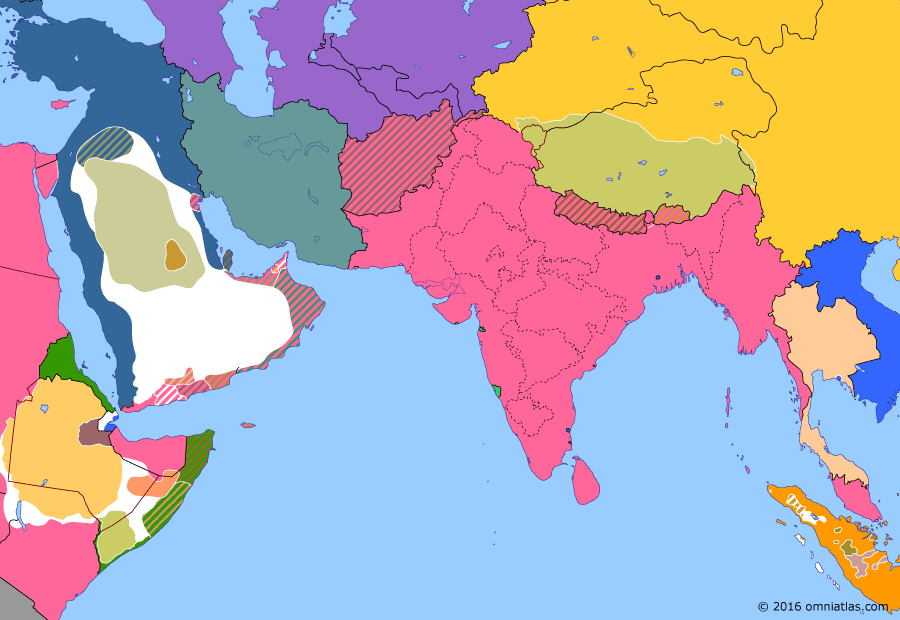Southern Asia 1902: Saudi Restoration
Pax Britannica
1880–1914 Pax Britannica
1914–1917 Great War in the Middle East
1917–1918 Fall of the Ottoman Empire
1918–1923 Anglo-French Overreach
1923–1934 Rising Nationalism
1934–1940 Arrival of the New Order
1940–1941 World War II: The Middle Eastern Theater
1941–1945 World War II: The South-East Asian Theater
1945–pres Independence
Saudi Restoration
15 Jan 1902 Saudi Restoration
3 Aug 1904 British Expedition to Tibet
16 Oct 1905 Partition of Bengal
31 Aug 1907 Anglo-Russian Entente
15 Jul 1909 Persian Constitutional Revolution
13 Nov 1911 Chinese Revolution
24 Dec 1911 Strangling of Persia
17 Aug 1912 Tibetan Independence
29 Jul 1913 Anglo-Ottoman Convention
3 Jul 1914 Simla Accord
By the early 1890s, the Emirate of Ha'il had risen to dominate the Arabian interior, conquering the rival Emirate of Nejd and forcing its Saudi rulers to flee to Kuwait. However, local discontent with Ha'il gradually grew and in 1901 the House of Saud returned, recapturing Riyadh the following year.
